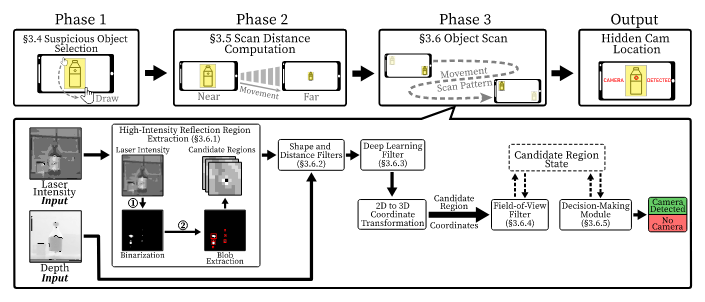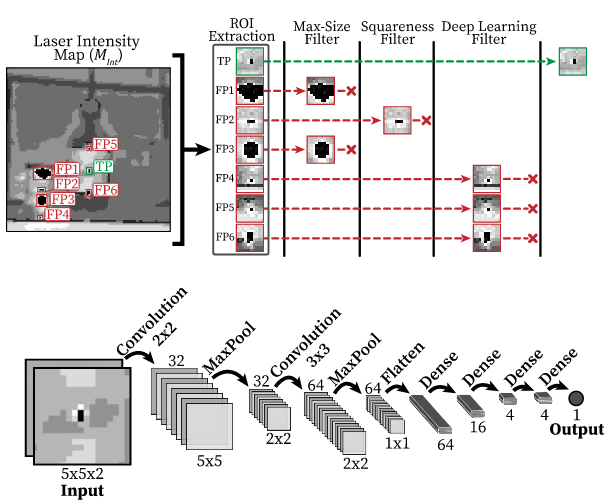Researchers at the National University of Singapore, and Yonsei University (Korea) developed a method to identify hidden cameras in the room when a conventional smart phone, equipped with a sensor ToF (Time of flight). It is noted that at present a hidden camera can be bought for a little more than a dollar, and these cameras have a 1-2 millimeter size, which makes it difficult to find them on the premises. In South Korea, for the year were more than 6,800 incidents related to the placement of hidden cameras in hotel rooms or bathrooms.
The proposed method researchers LAPD (Laser-Assisted Photography Detection) allows to detect hidden cameras using modern smartphone, equipped with depth sensor (ToF), used to estimate the distance to objects in the focusing camera and augmented reality applications. Examples of smart phones, which utilize such sensors, called Samsung S20 and Huawei P30 Pro. Sensor constructs depth map by performing scanning laser surrounding space and calculating the distance based on the delay of arrival of the reflected beam.
The method of detection of hidden cameras is based on the detection of anomalies in the illumination laser lenses and lenses that create specific highlights in the resulting depth map. Anomalies are detected using a machine learning algorithm, able to distinguish the specific glare of cameras. The study’s authors intend to publish the finished application for the Android platform, after solving some problems with the API restrictions.


The total time needed to scan the room, is estimated to be 30-60 seconds. The conducted with 379 volunteers to experiment with the help of hidden cameras LAPD method were detected in 88.9% of cases. For comparison, on the camera eye could only find 46% of the participants in the experiment, and the efficiency of use of the specialized detector signal K18 was 62.3% and 57.7%, depending on the selected scan mode. LAPD method also showed a lower rate of false positives – 16.67% vs. 26.9% / 35.2% for K18 and 54.9% when looking at eye
.
LAPD detection accuracy depends on entering the chamber 20-degree viewing angle sensor and finding the sensor at an optimal distance (too near the location of camera flare lubricated, and when too distant – vanishes). To improve the accuracy of the sensors is suggested to use a higher resolution (in the available among researchers smartphones ToF-resolution sensor is 320×240, i.e., the anomaly resolution of the image only 1-2 pixels) and granularity (Now for each pixel has a depth of only 8 levels ).
